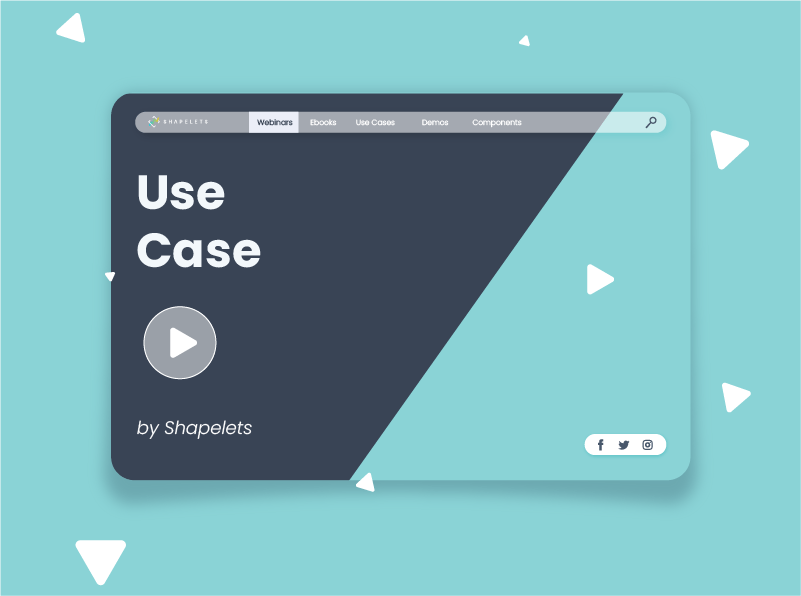The secret to cost-efficient Vector Databases:
Smarter use of computational resources
05 December 2024 | 3 minutes
Do you prefer to listen to it? Just hit play!
RAM memory plays a pivotal role in the performance and efficiency of databases, especially when it comes to vector databases optimized for high-dimensional data processing
Intro
Maintaining databases is a critical yet often costly aspect of managing modern data systems. From hardware and software expenses to personnel, updates, and compliance, these costs can add up quickly, especially as data volumes grow.
Traditional databases require significant investments in infrastructure, skilled administrators, and optimization efforts to ensure performance and scalability. Cloud-based solutions, while offering flexibility, often introduce variable costs based on usage, storage, and compute resources. As organizations increasingly adopt vector databases for handling high-dimensional data in GenAI applications and recommendation systems, cost efficiency becomes paramount.
This article explores how businesses can leverage vector databases while minimizing maintenance costs, ensuring they deliver high performance without breaking the bank.
The image has been taken from the article “Auto-Encoding Variational Bayes” by Kingma, D.P., & Welling, M., available on arXiv here. Figure 1, page 3.
Why is RAM memory relevant?
RAM memory plays a pivotal role in the performance and efficiency of databases, especially when it comes to vector databases optimized for high-dimensional data processing. Unlike traditional databases, which may rely heavily on disk storage for reads and writes, vector databases prioritize in-memory operations to deliver the low-latency performance required for tasks like similarity searches, real-time recommendations, and machine learning workloads. RAM allows these databases to cache indexes, query results, and frequently accessed vectors, minimizing the need for costly and time-consuming disk I/O operations. However, as the size of datasets grows, so do memory requirements, often making RAM one of the most significant cost drivers.
Choosing cost-efficient strategies, such as leveraging hybrid memory-disk storage, prioritizing high-use data for caching, or using compression techniques, can help balance performance needs with budget constraints. This careful optimization ensures that vector databases maintain their speed and scalability without excessive memory expenditure.
Shapelets’ bitmap compression technology
Shapelets VectorDB stands out as a cost-efficient solution by employing roaring bitmap compression, a powerful technique that optimizes storage, computational efficiency and scalability. Bitmap compression reduces the size of data representations, particularly for sparse or repetitive datasets, which are common in high-dimensional vector data. This optimization minimizes the memory footprint, enabling the database to store and process larger datasets with less RAM and disk space. Additionally, smaller data representations result in faster query execution, as less data needs to be transferred and processed, reducing CPU overhead.
By keeping computational resource usage low, Shapelets VectorDB not only enhances performance but also significantly lowers maintenance costs associated with hardware, energy, and cloud hosting. This makes it an ideal choice for businesses aiming to scale their vector database infrastructure without inflating operational expenses.
Understanding bitmap compression in vector databases
Imagine you are building an analytics platform that tracks user actions on a website. You want to filter users based on specific conditions and then compute aggregates or intersections of these filtered groups. For example:
1. Users who visited Page A.
2. Users who purchased a product.
3. Users who signed up for the newsletter.
Each of these conditions represents a subset of user IDs from a large set of all users (say, millions of users). Without roaring bitmaps, one would store these user subsets in lists or hash sets:
• Users who visited Page X: [101, 105, 110, …]
• Users who purchased a product: [103, 110, 120, …]
To find common users (e.g., users who both visited Page X and purchased a product), you would need to compare these lists or sets. This can be computationally expensive, particularly with large datasets.
Instead of storing lists, you can represent each group as a Roaring Bitmap, where the bit at index i is 1 if the user with ID i belongs to the group, and 0 otherwise.
Roaring Bitmaps efficiently represent sets by mapping user IDs to bitmaps. For instance, the user IDs of those who visited Page X, of those who purchased a product and of those who signed up for the newsletter could be stored in three different roaring bitmaps. Operations on these sets are extremely fast. To find users who both visited Page X and purchased a product, you compute the intersection between the roaring bitmap of each filter or condition. This can be performed using efficient CPU-level operations such as bitwise AND. Additionally, Roaring Bitmaps compress the data effectively when user IDs are sparse. For example, if the range of user IDs spans from 1 to 10 million, but only 10,000 users visited Page A, the bitmap compresses this sparse data into a much smaller and efficient representation compared to storing raw IDs.
Conclusion
In conclusion, achieving cost efficiency in vector databases requires a smarter, more strategic use of computational resources. Infrastructure costs—whether for on-premises servers or cloud-based solutions—are a significant factor in database maintenance, making it essential to optimize resource usage to avoid unnecessary expenses. Keeping computational demands like CPU, memory, and storage at minimal levels directly translates to cost savings, especially as datasets grow larger and queries become more complex. Shapelets VectorDB exemplifies this approach with its use of roaring bitmap compression, which reduces data size and minimizes the need for high-memory and processing power. This not only accelerates query performance but also keeps operational costs low by requiring fewer resources. By leveraging innovations like bitmap compression, Shapelets VectorDB ensures that businesses can scale efficiently, delivering high performance without high costs—proof that smarter databases are faster, more effective, and economically sustainable.

Want to apply Shapelets to your projects?
Contact us and let’s study your case.
